In order to understand the problems and the technology of this area, I strongly recommend reading my basic article "Disadvantages of onboard sound – influence of graphics card, headphone sensitivity and motherboard layout", where I can read both the measurement and the the calculation of the relevant values. In any case, this contributes to a better understanding and also ensures security when buying new products such as headsets, headphones and even motherboards.
Measurement of output voltage and power RMS
I then measured the output voltage in Volt RMS and the output power in Watt RMS for the most common impedances /output resistors and adjusted the level each time so that the nonlinear distortions moved in the range of less than one percent. Although this does not replace a professional measurement of the distortion, it is definitely useful as an approximation.
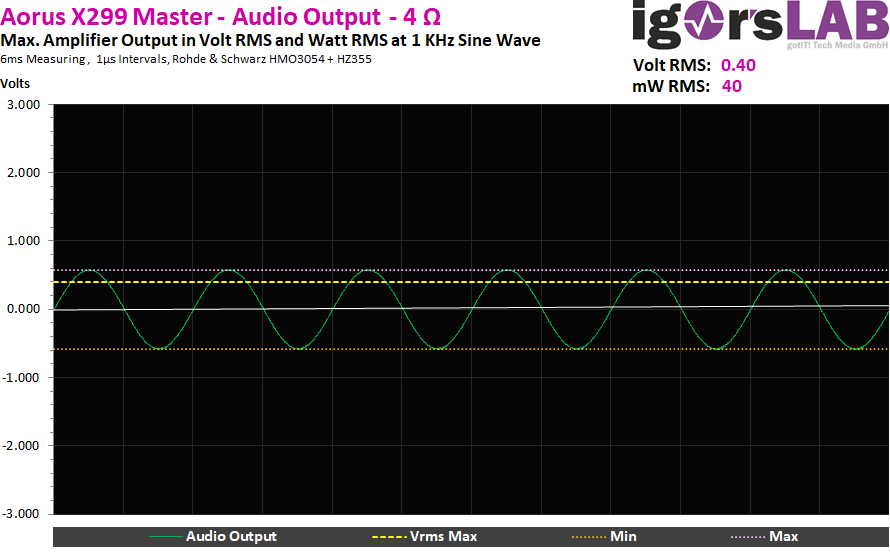
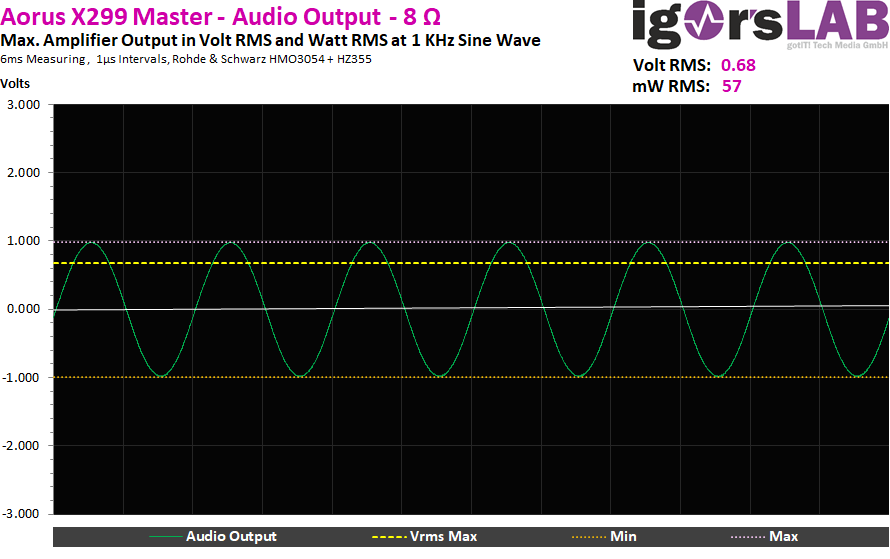
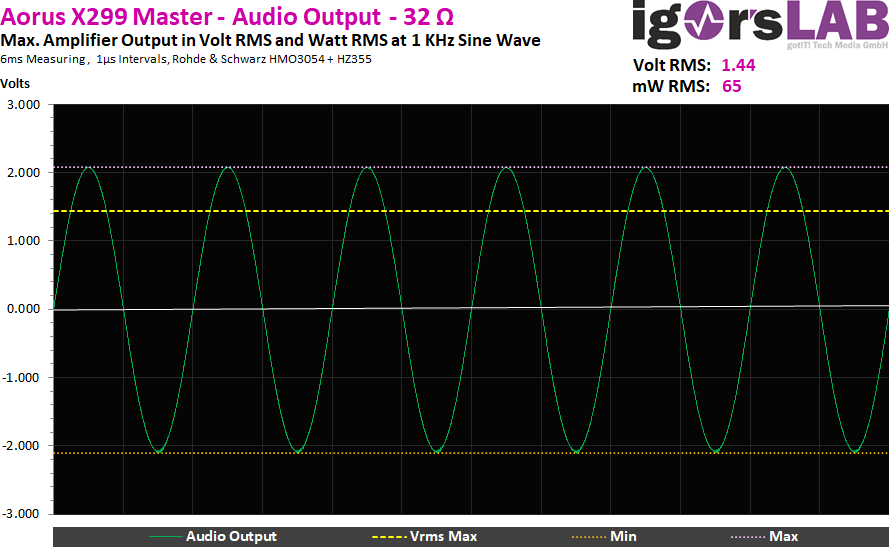
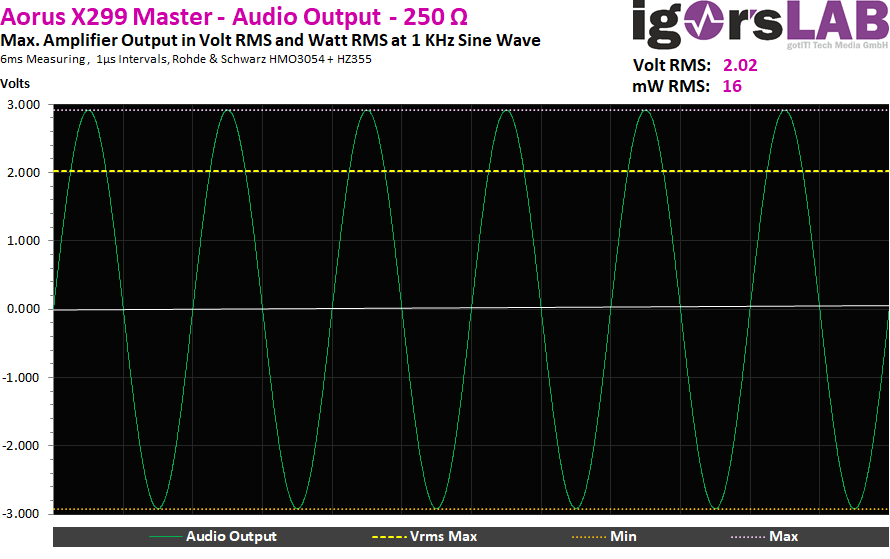
Influence of the graphics card under load
After reading the article linked above, this measurement no longer gives up any puzzles. The 3.7 mV RMS are certainly not a bad value for the full-load gaming operation of this graphics card.
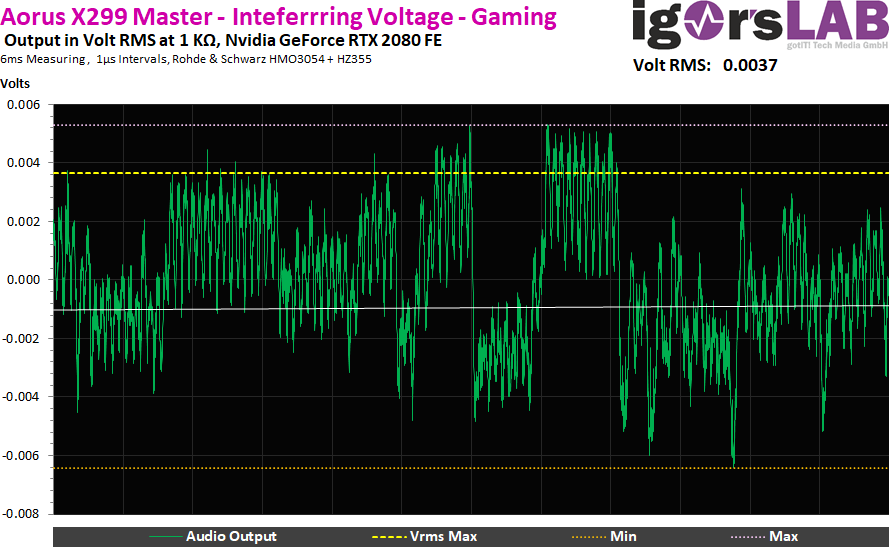
Calculation for output power and sound level
If you buy headphones, the so-called sensitivity is a very important indicator of how loud it can be operated in the end, i.e. which sound pressure level SPL (Sound Pressure Level) it can still reach cleanly at which amplifier power. But you don't always produce a certain sound pressure in the same form. A lot depends on the recorded material. So if you have an average, well-tolerated level (SPL) of e.g. 85 dB (child-proof and not harmful in the long term), e.g. in classical music and its high dynamic range for the peak values, add 25 to 30 dB. This also applies to good games with 12 to 18 dB. Pop music, on the other hand, usually stands at "only" 8 to 12 dB surcharge as a formula of thumb
The first table shows us rather bad headphones with a sensitivity of 85 dB/mW up to 94 dB/mW and which amplifier power to set in order to reach maximum sound pressure levels between 90 and 115 dB. Whether the parts will endure and survive at all is, of course, another matter. If you know the impedance of your headphones, the above measurements also provide the output power in watt RMS, which you now have to look for on the left Y-axis of the curves. The X-axis shows the resulting sound pressure level SPL in dB and the colored curves can be assigned to the respective characteristic sensitivity of the respective headset.
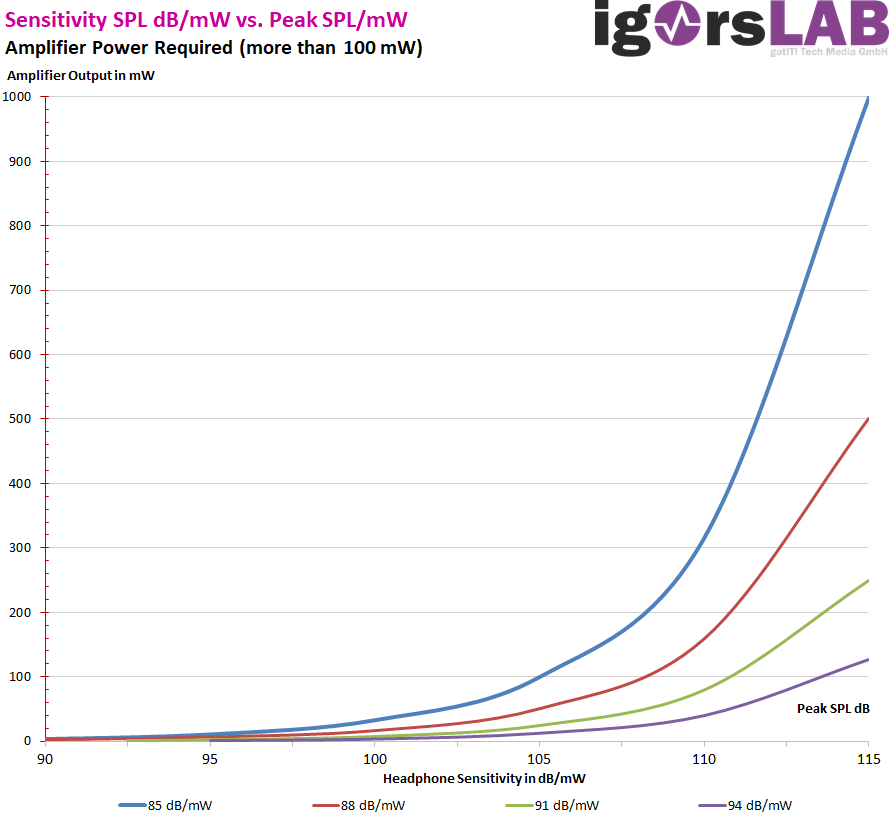
Here I would have the slightly better headphones, which are limited with the output power.
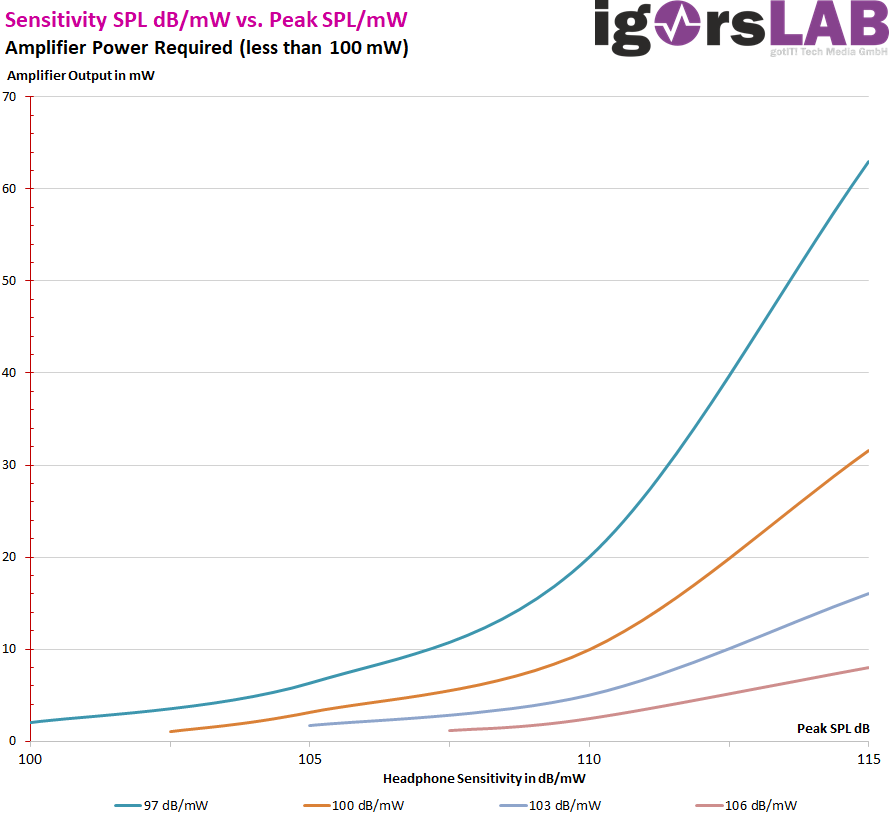
Intermediate conclusion
The built-in ESS-DAC with integrated headphone amplifier is not bad and the board even delivers the advertised 2 volt RMS, but only from 250 ohm impedance upwards. Here you have to reprimand gigabytes a little, because it is a rather to-to-value for high-impedanceclosed outputs and definitely not an indication for headsets that are significantly lower in the consumer area with 32 ohms. Then it is demonstrably only 1.44 volts RMS and resulting 65 mW RMS. That's not bad at first, but it doesn't replace a really good headphone amplifier.
If you have low- or medium-sensitivity headphones that require higher amplifier performance, this solution isn't always enough, you have to be aware of that. For my part, I don't even get my really high-quality Amiron Home from Beyerdynamic with its 250 ohms nearly controlled. Here, as a customer, you will really have to make a case decision and, if necessary, you will have to orientate yourself on the existing or planned technology.
The effect of the transients, i.e. the foreign scattering of the graphics card under load, is present, but relatively small. This is laudable and also testifies to an adapted and functional board layout. The measured 3.7 mV at 1 KOhm are very good, although still present and detectable. Of course, I also have the right YouTube video for all reading lazy people, even if the board shown there is different. The principle remains the same.



















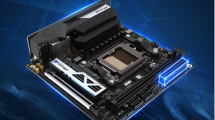















Kommentieren